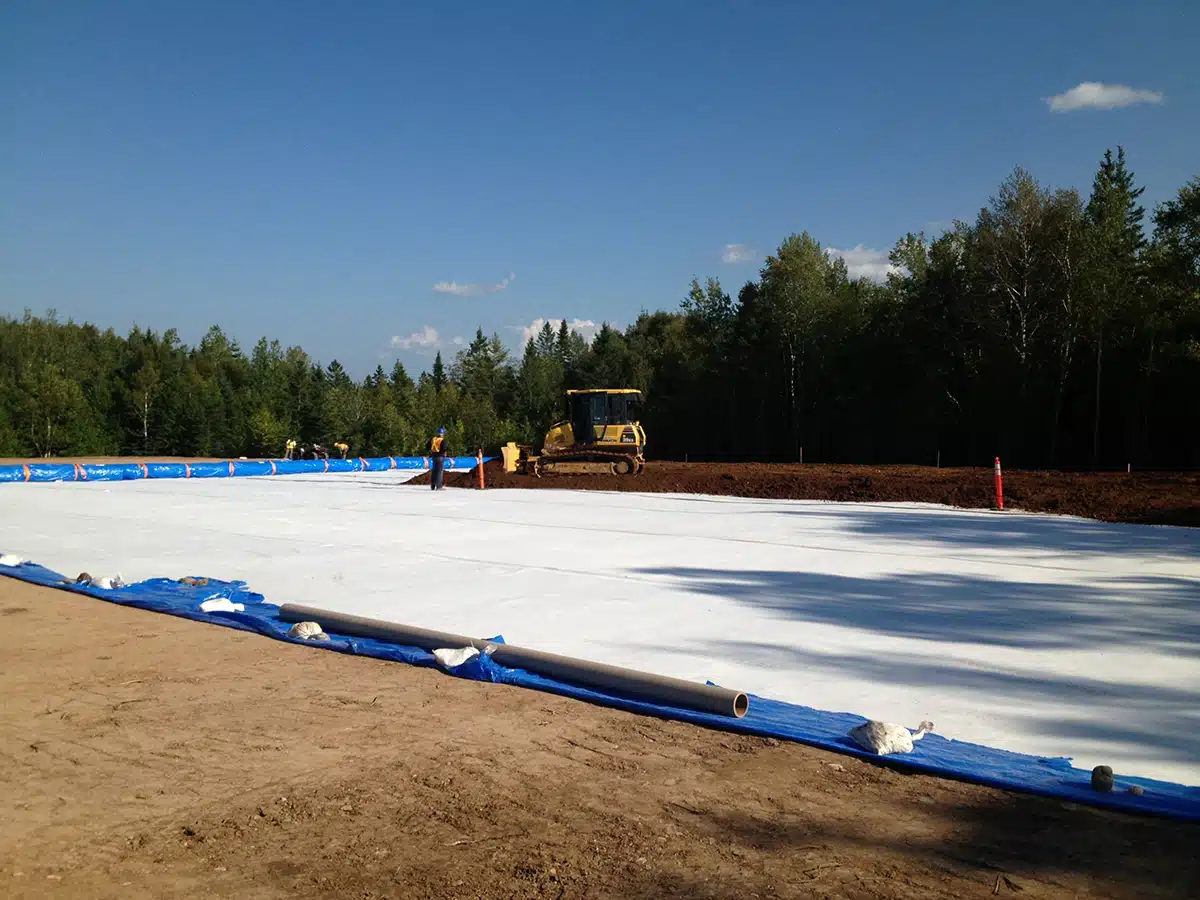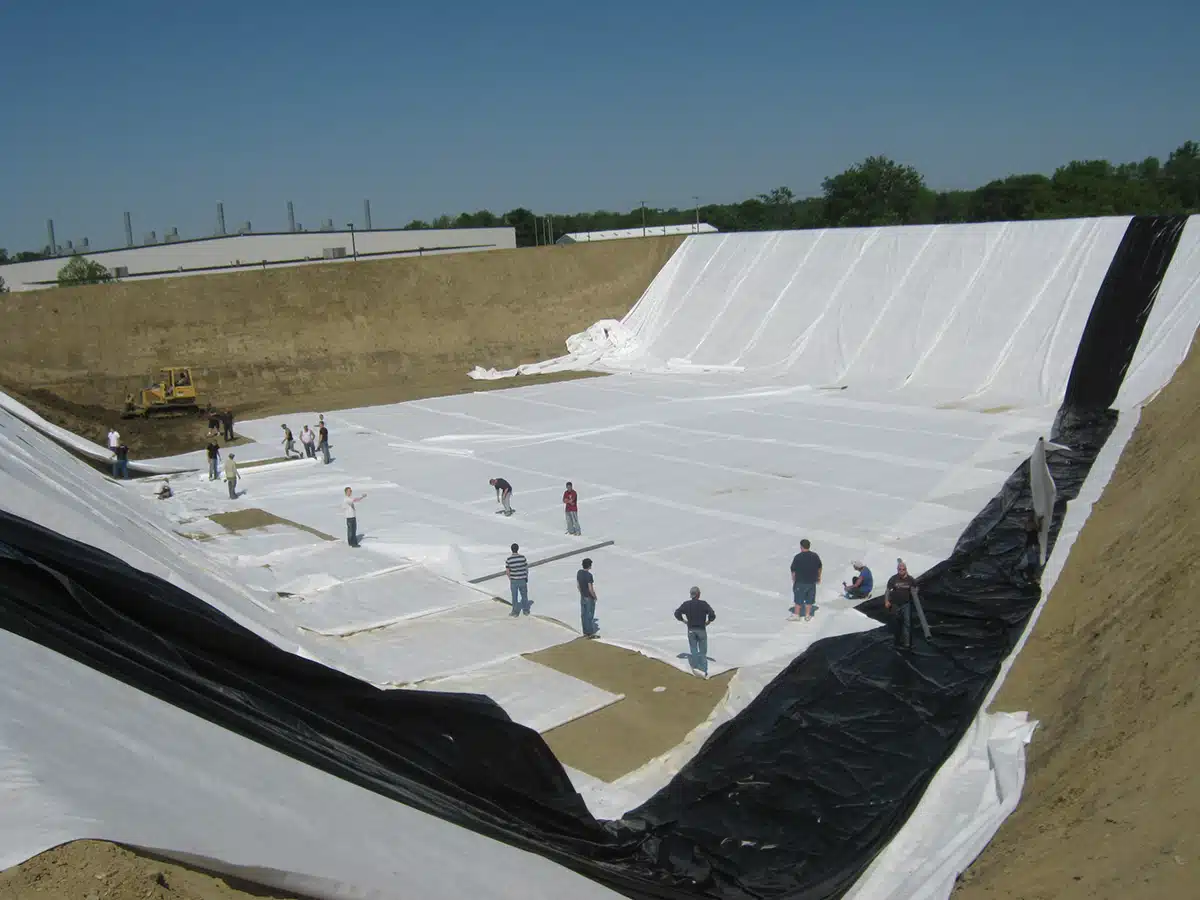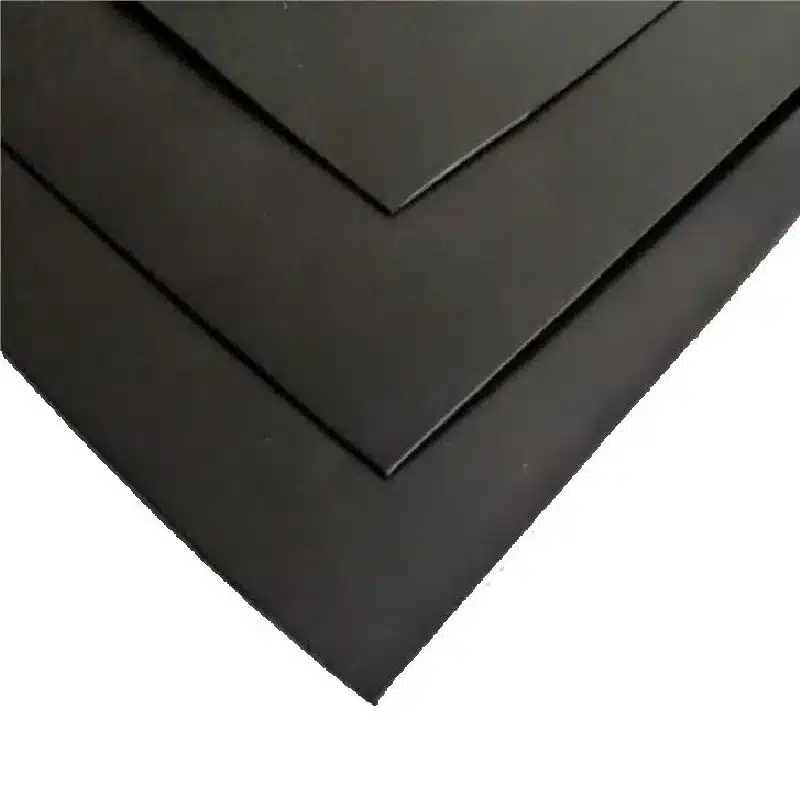+86-159 9860 6917
info@geofantex.com
geofantex@gmail.com
+86-400-8266163-44899
In the realm of civil engineering and construction, the advent of geosynthetics has revolutionized traditional practices, offering innovative solutions to complex problems. Geosynthetic fabrication, a process that intertwines engineering prowess with material science, has emerged as a cornerstone in modern infrastructure projects. This article delves into the essence of geosynthetic materials, exploring their manufacturing processes, applications, and the polymers that bring them to life, shedding light on how these engineered fabrics are shaping the future of construction and environmental projects.

What is the geosynthetic method?
Definition
The geosynthetic method involves the use of synthetic materials, known as geosynthetics, in civil engineering and construction projects. These materials include geotextiles, geomembranes, geogrids, geonets, and geocomposites, which serve various functions in soil and infrastructure applications.
Purpose
The primary purpose of the geosynthetic method is to enhance the performance and longevity of construction projects by improving soil properties, and providing reinforcement, filtration, drainage, and containment. Geosynthetics help in addressing challenges related to soil instability, erosion, and water management.
Applications:
| Road Construction | Geosynthetics are used to reinforce road bases, reduce rutting, and extend the lifespan of roadways. |
| Erosion Control | They help prevent soil erosion on slopes, riverbanks, and coastal areas by providing stability and protection. |
| Drainage Systems | Geosynthetic materials facilitate efficient drainage in landfills, retaining walls, and agricultural fields. |
| Soil Reinforcement | Geogrids and geotextiles are employed to reinforce weak soils, improving their load-bearing capacity for structures like bridges and embankments. |
| Containment | Geomembranes are used to contain liquids and gases in applications such as ponds, reservoirs, and waste containment systems. |
Advantages:
| Durability | Geosynthetics are resistant to chemical, biological, and environmental degradation, ensuring long-term performance. |
| Cost-Effectiveness | They reduce the need for traditional construction materials and methods, resulting in cost savings. |
| Ease of Installation | Geosynthetics are lightweight and easy to install, reducing labor and construction time. |
| Environmental Benefits | These materials can minimize environmental impact by reducing the need for natural resources and preventing soil erosion and contamination. |
What is the process of manufacturing geosynthetics?
Material Selection
- Raw Materials: Polypropylene, polyester, polyethylene, and other polymers.
- Additives: Stabilizers, UV protectors, and colorants to enhance properties.
Polymer Preparation
- Extrusion: Polymers are melted and extruded into filaments or sheets.
- Spinning: For fibers, the molten polymer is spun through spinnerets to form filaments.
Fabric Formation
- Weaving/Knitting: Filaments are woven or knitted into fabric for woven geosynthetics.
- Nonwoven Methods:
- Spunbonding: Continuous filaments are deposited onto a moving belt to form a web.
- Needle-punching: Fibers are mechanically interlocked using barbed needles.
- Thermal Bonding: Fibers are bonded together using heat and pressure.
Coating and Laminating (Optional)
- Coating: Applying a layer of polymer or other materials to enhance performance.
- Laminating: Bonding multiple layers of geosynthetics to create composite materials.
Finishing Processes
- Heat Setting: Stabilizing the fabric by heating to remove stresses.
- Cutting and Slitting: Cutting the geosynthetics into required sizes and shapes.
Quality Control Measures
- Testing: Physical, mechanical, and chemical tests to ensure specifications are met.
- Inspection: Visual and instrumental inspections for defects and uniformity.
- Certifications: Compliance with industry standards and regulations.
Packaging and Shipping
- Packaging: Rolled or folded geosynthetics are packed for protection during transport.
- Labeling: Proper labeling for identification and usage instructions.
- Shipping: Distribution to customers and project sites.
Techniques and Technologies
- Automation: Use of automated machinery for precision and efficiency.
- Advanced Weaving Machines: High-speed looms and knitting machines for fabric formation.
- Environmental Controls: Measures to minimize environmental impact during production.

What is an example of a geosynthetic?
A specific example of a geosynthetic material used in civil engineering or construction projects is geotextile.
Geotextile:
Definition: Geotextiles are permeable fabrics that, when used in association with soil, have the ability to separate, filter, reinforce, protect, or drain.
Types:
| Woven Geotextiles | Made from weaving fibers together, offering high load capacity and tensile strength. |
| Non-Woven Geotextiles | Made from bonding fibers together, providing excellent filtration and drainage properties. |
Applications:
| Separation | Preventing intermixing of different soil layers in road construction. |
| Reinforcement | Enhancing the strength of soil in embankments and retaining walls. |
| Filtration | Allowing water to pass through while retaining soil particles in drainage systems. |
| Protection | Providing cushioning and protection for geomembranes in landfill liners. |
| Drainage | Facilitating the flow of water in areas like sports fields and roads. |
Increased longevity and stability of construction projects. Enhanced performance of soil structures. Cost-effective solution for many civil engineering challenges.
What polymers are used in geosynthetics?
The polymers commonly used in geosynthetics include:
Polypropylene (PP):
- Widely used due to its chemical resistance and durability.
- Common in geotextiles, geogrids, and geomembranes.
Polyethylene (PE):
- Includes both high-density polyethylene (HDPE) and low-density polyethylene (LDPE).
- Used in geomembranes, geonets, and geocomposites due to its excellent chemical resistance and flexibility.
Polyester (PET):
- Known for its high tensile strength and resistance to creep.
- Frequently used in geotextiles and geogrids.
Polyvinyl Chloride (PVC):
- Offers flexibility and resistance to UV light and weathering.
- Commonly used in geomembranes and geocomposites.
Polystyrene (PS):
- Used in some geocomposite drainage products.
- Known for its stiffness and compressive strength.
Ethylene Propylene Diene Monomer (EPDM):
- Valued for its elasticity and weather resistance.
- Often used in geomembranes.
The polymers used in geosynthetics are primarily synthetic and encompass a broad range including polyethylene (PE), polypropylene (PP), polyvinyl chloride (PVC), nylons, polystyrene (PS), and polyesters. Each of these polymers offers distinct properties that render geosynthetics suitable for a wide array of applications. Polyethylene and polypropylene, for instance, are celebrated for their durability, chemical resistance, and strength, positioning them as ideal choices for most geotechnical applications. Polyesters are favored for their high tensile strength, making them the go-to option for reinforcement tasks. Polyvinyl chloride stands out for its flexibility and resistance to environmental factors, proving invaluable in containment applications. Additionally, nylons and polystyrene expand the versatility of geosynthetics, with nylons offering exceptional wear resistance and strength, and polystyrene providing rigidity and form stability under various conditions. This diverse range of polymers ensures that geosynthetics can be tailored to meet the specific needs of any engineering challenge to which they are applied.



Get Free Sample
We’ll respond as soon as possible(within 12 hours)






















